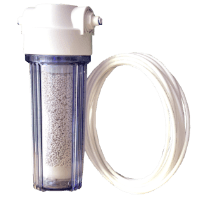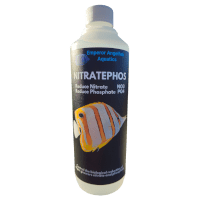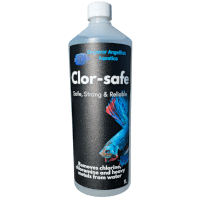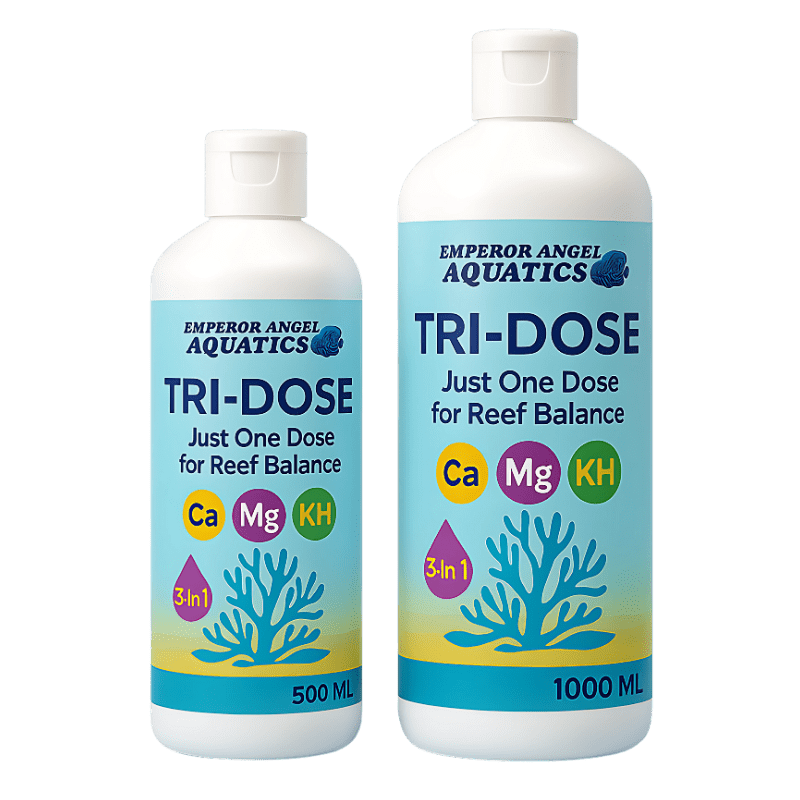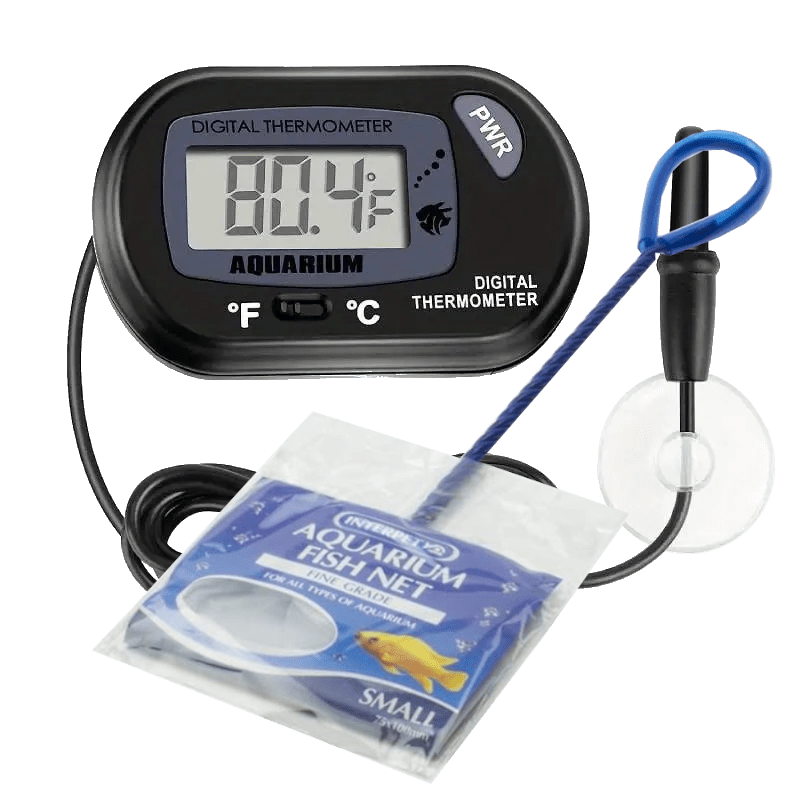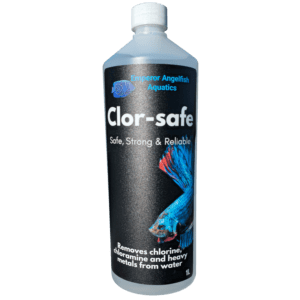
Clor-Safe
Why use Clor-safe
Condition
Dechlorinates aquarium and tap water, detoxifies heavy metals.
Less Stress
Utilises Vitamin B to reduce stress on fish from water changes.
Health Boost
Protects gills, mucus and slime coat of fish with iodine and magnesium.
Safe & Strong
Use less and still be safe, it is suitable for both freshwater and marine aquariums.
CLOR-SAFE
Safe, Strong & Reliable
Simply add 3ml per 10 Litres
To fully dechlorinate aquarium and tap water, detoxifies heavy metals perfect for water changes and setting up new aquariums. Happy fish with no gill damage or burns.
“I bought this because of the price and I was not disappointed lasted a long time even a small bottle. Works great and fish love their fresh safe water, Because it’s so effective I use less and have to buy less even though I do 20% water changes every week.”
Stephen Morris
The Impact of Chlorine on Tropical Fish
Tropical fish are beloved by hobbyists and enthusiasts around the world for their vibrant colors, unique behaviors, and diverse species. However, one often overlooked threat to these delicate creatures is the presence of chlorine in their aquatic environment. Chlorine, a common disinfectant used in tap water treatment, can have detrimental effects on tropical fish if not properly managed. Understanding these effects and implementing mitigation strategies is crucial for the well-being of aquarium inhabitants.
Effects of Chlorine on Tropical Fish
Chlorine is added to municipal water supplies to kill harmful bacteria and pathogens, making it safe for human consumption. While effective at purifying water for humans, chlorine can prove toxic to fish in high concentrations. When exposed to chlorine, tropical fish may experience various adverse effects, including:
Damage to Gill Tissues: Chlorine can irritate and damage the delicate tissues of fish gills, which are essential for respiration. This damage can impair the fish’s ability to extract oxygen from the water, leading to respiratory distress and even suffocation.
Disruption of pH Balance: Chlorine can alter the pH balance of aquarium water, potentially causing fluctuations outside the optimal range for tropical fish. Sudden changes in pH can stress fish and weaken their immune systems, making them more susceptible to diseases and infections.
Skin and Tissue Irritation: Direct contact with chlorine can cause skin and tissue irritation in tropical fish. This irritation may manifest as redness, inflammation, or even lesions on the fish’s body, compromising its overall health and well-being.
Suppression of Beneficial Bacteria: Chlorine not only targets harmful bacteria but can also kill beneficial bacteria present in aquariums. These beneficial bacteria play a crucial role in maintaining water quality by breaking down organic waste and converting harmful compounds like ammonia and nitrite into less toxic forms. The loss of these bacteria can lead to deteriorating water quality and increased stress on fish.
Mitigation Strategies
Fortunately, there are several effective strategies to mitigate the harmful effects of chlorine on tropical fish:
Water Dechlorination: The most common method of removing chlorine from tap water is through dechlorination. Dechlorination products, such as liquid dechlorinators or activated carbon filters, work by neutralizing chlorine compounds, making the water safe for fish. It is essential to follow the manufacturer’s instructions carefully when using dechlorination products to ensure effective treatment.
Aging Tap Water: Allowing tap water to sit for 24 to 48 hours before adding it to the aquarium can also help dissipate chlorine naturally. During this time, chlorine will evaporate from the water, reducing its concentration to safe levels for fish. However, this method may not be as effective for water treated with chloramines, a more stable form of chlorine.
Use of Reverse Osmosis (RO) Water: Reverse osmosis filtration systems can remove chlorine and other impurities from tap water, providing a clean and safe water source for aquariums. Mixing RO water with tap water or using it as a base for aquarium water can help reduce chlorine concentrations and create an optimal environment for tropical fish.
Regular Water Testing: Monitoring water quality parameters, including chlorine levels, is crucial for maintaining a healthy aquarium ecosystem. Invest in a reliable water testing kit to regularly measure chlorine concentrations and take appropriate action if levels exceed safe limits. This proactive approach can help prevent potential harm to tropical fish and other aquarium inhabitants.
Quarantine Procedures: When introducing new fish to an aquarium, it is essential to quarantine them in a separate tank before adding them to the main display. Quarantine tanks should be equipped with filtration systems and treated with dechlorinators to ensure the new arrivals are not exposed to harmful chlorine levels during acclimatization.
Conclusion
While chlorine serves a vital role in ensuring the safety of municipal water supplies, its presence can pose significant risks to tropical fish in aquariums. Understanding the effects of chlorine on fish health and implementing appropriate mitigation strategies are essential for creating a safe and thriving aquatic environment. By employing methods such as water dechlorination, aging tap water, and regular water testing, hobbyists can safeguard their beloved tropical fish and enjoy the beauty of their aquariums for years to come.
Clor-Safe Dechlorinates aquarium and tap water, detoxifies heavy metals.

